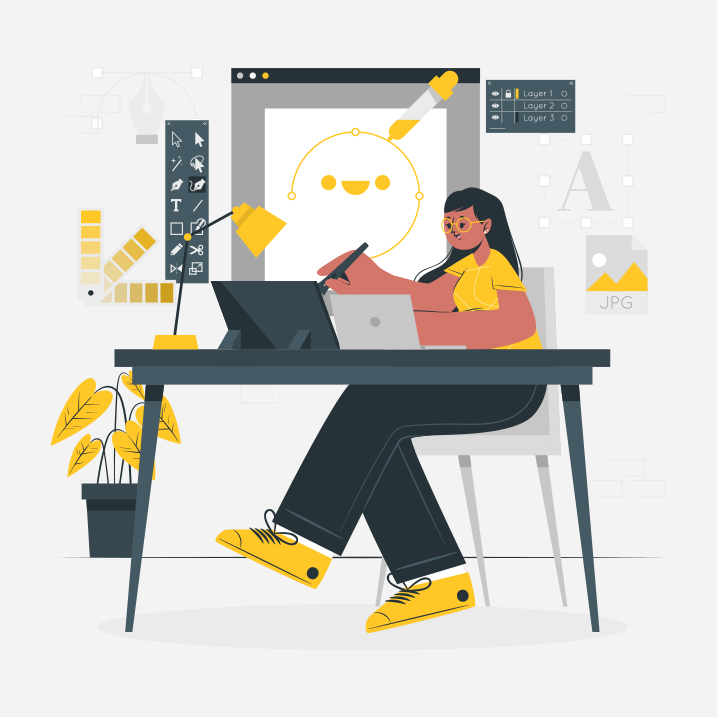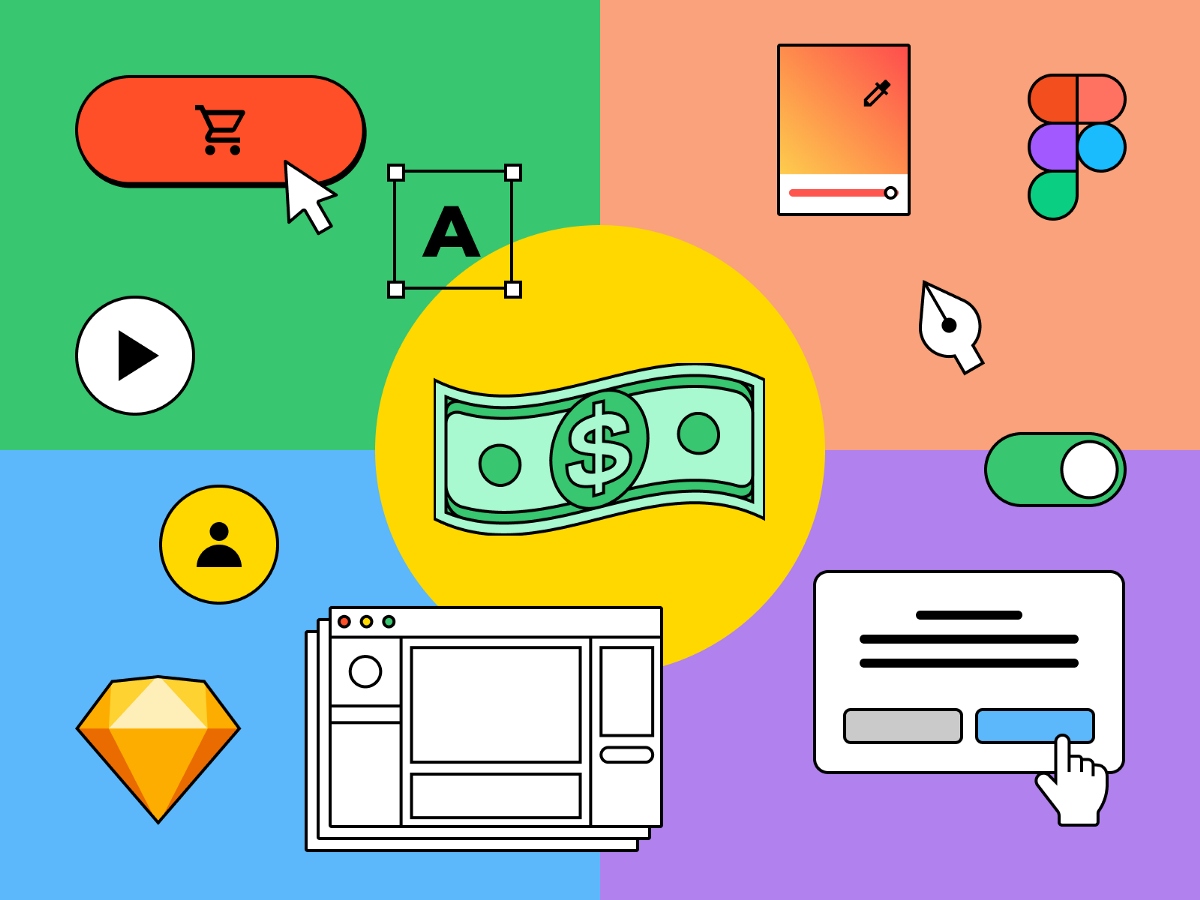Hello!
 The digital space is expanding exponentially with every passing second. This expansion directly results from the volume of opportunities the space presents for the users, the creators, the customers, the service providers, the audience, and the marketing units.
The digital space is expanding exponentially with every passing second. This expansion directly results from the volume of opportunities the space presents for the users, the creators, the customers, the service providers, the audience, and the marketing units.
When it comes to marketing and communication, design is a crucial element that cannot be avoided. Companies, creators, digital agencies, and marketing firms are looking for ways to develop more engaging and meaningful designs that are practical, impactful, and justifying their intent.
With the importance given to designs, there comes a huge responsibility to ensure that the designs are suitable for a range of users.
Digital design companies are emphasizing creativity merged with thoughtfulness. Designs now are not just about catchy colors and patterns.
 They step beyond the aesthetics and withhold the meaning and integrity of a brand or an idea. The audience in the current digital and social setup is critical of the content they consume, and digital design companies are aware of the repercussions that follow bad designs.
They step beyond the aesthetics and withhold the meaning and integrity of a brand or an idea. The audience in the current digital and social setup is critical of the content they consume, and digital design companies are aware of the repercussions that follow bad designs.
“How do bad designs affect different users?” is a question that has multiple answers, and each of these answers directly impacts the image of the party associated with the design.
It affects how the users feel and perceive the party’s intent and creates a sensitive space around the relationship between the party sharing the design and the party interacting with it.
If you are a new digital design company, a marketing firm, or anyone aspiring to start a design-related venture, here are a few pointers you can keep in mind to deliver good designs that do not affect the user adversely.
What is a bad design?
The term ‘bad’ is subjective to opinions. What might seem bad, degrading, unclear, or chaotic to one user might not give the same impression to another one.
 So how does one know if their design is good or bad? You have to work keeping the bigger picture in mind. Study your audience, your target demographic, their thinking, and then come up with a plan.
So how does one know if their design is good or bad? You have to work keeping the bigger picture in mind. Study your audience, your target demographic, their thinking, and then come up with a plan.
From the interactive quotient to the meaning behind the overall design, a good design is considerate and thoughtful. At the same time, it thrives on creativity and consumer appeal.
Refrain from using any designs that might be difficult for the users to understand. Be it an infographic, a logo, a website interface, or any other form of digital design, a good design keeps the end-user in perspective. It reflects the intention minus any chances of misunderstanding or unnecessary complexity.
Some instances of bad designs
As discussed earlier, the term ‘bad’ is subjective, and so are the consequences and impacts of a bad design. There are numerous ways in which bad designs impact different users, and some examples of the same are discussed below:
The non-user friendly side to bad designing
 Most companies reach out to designing agencies that formulate interfaces by extracting their research from the real-life user experience.
Most companies reach out to designing agencies that formulate interfaces by extracting their research from the real-life user experience.
Many still rely on designs that look good yet serve little value. The simplest example of a non-user-friendly side to bad designing are online forms that you fill out while signing up for a website, logging in to your account, or simply resetting your password.
The interface often causes confusion between the user and site as the user clicks on the blank fields to fill in the information and the labels disappear.
The feature looks aesthetically pleasing but does not stand true to the convenience quotient. The user is forced to memorize the information they have filled in, resulting in frustration.
To prevent the non-user-friendly side of bad design, designers must keep it concise and straightforward for amateur users.
 Users should be able to retrieve any information they provide without any inconvenience. User experience (UX) should be at the core of design, and it is the most important metric to focus on.
Users should be able to retrieve any information they provide without any inconvenience. User experience (UX) should be at the core of design, and it is the most important metric to focus on.
The emotional impact of a bad design
Designs also include the features that are added to different sites. An example of this is the automatic collage feature offered by Facebook, where the platform automatically creates a collage of the account holder’s photos from the previous year.
A user based in New York felt the inhuman touch of technology when Facebook automatically made a collage for him, including the images of his deceased daughter.
The collage had happy music in the background, and its template included his daughter’s picture with the news about her death.
 Many similar instances add to the example and highlight the emotional impact of designs. However, this impact is not just limited to the bad parts. In any case, the designers need to develop designs that offer users the choice to control the features.
Many similar instances add to the example and highlight the emotional impact of designs. However, this impact is not just limited to the bad parts. In any case, the designers need to develop designs that offer users the choice to control the features.
Be it a dynamic template, a logo, or a poster, designers are responsible for creating content that does not hamper the user’s emotional state in any case.
Also read: How to Start An E-commerce Business From Scratch
The fatal impact of a bad design
Infographics are a prominent part of designing. These infographics include user manuals, equipment guides, and general direction or warning boards.
A user who seeks guidance from a manual will look for a priority sequence and reference images. The designer needs to be mindful of the text, graphics, and sequence to create a manual that is practical and handy for the user.
 If any of the three mentioned components, i.e., the priority sequence, the text, or the reference graphic, are not good enough, the design will defy the purpose and create chaos in times of training or need.
If any of the three mentioned components, i.e., the priority sequence, the text, or the reference graphic, are not good enough, the design will defy the purpose and create chaos in times of training or need.
Ultimately, it will take the shape of a bad design and lead to fatal scenarios like emergency fires or the need for urgent medical aid if the viewer is following instructions through the designs to deal with a particular situation.
As designers, your job is much more than completing the project assigned to you. You are the bridge that connects the creator and the consumer.
Whether it is a website logo, a campaign poster, or an entertaining game, you serve as the comprehensive gateway to things that need better representation for the users and the audience.
The intent behind digital designs is to provide an engaging user experience. The top players of the designing industry have built their name on the pillar of high standards by creating thoughtful, clear, and sequential designs.
Pranjal Bora works as Design Lead at Digital Authority Partners, a full-service digital marketing agency.
Thank you!
Join us on social networks!
See you!






